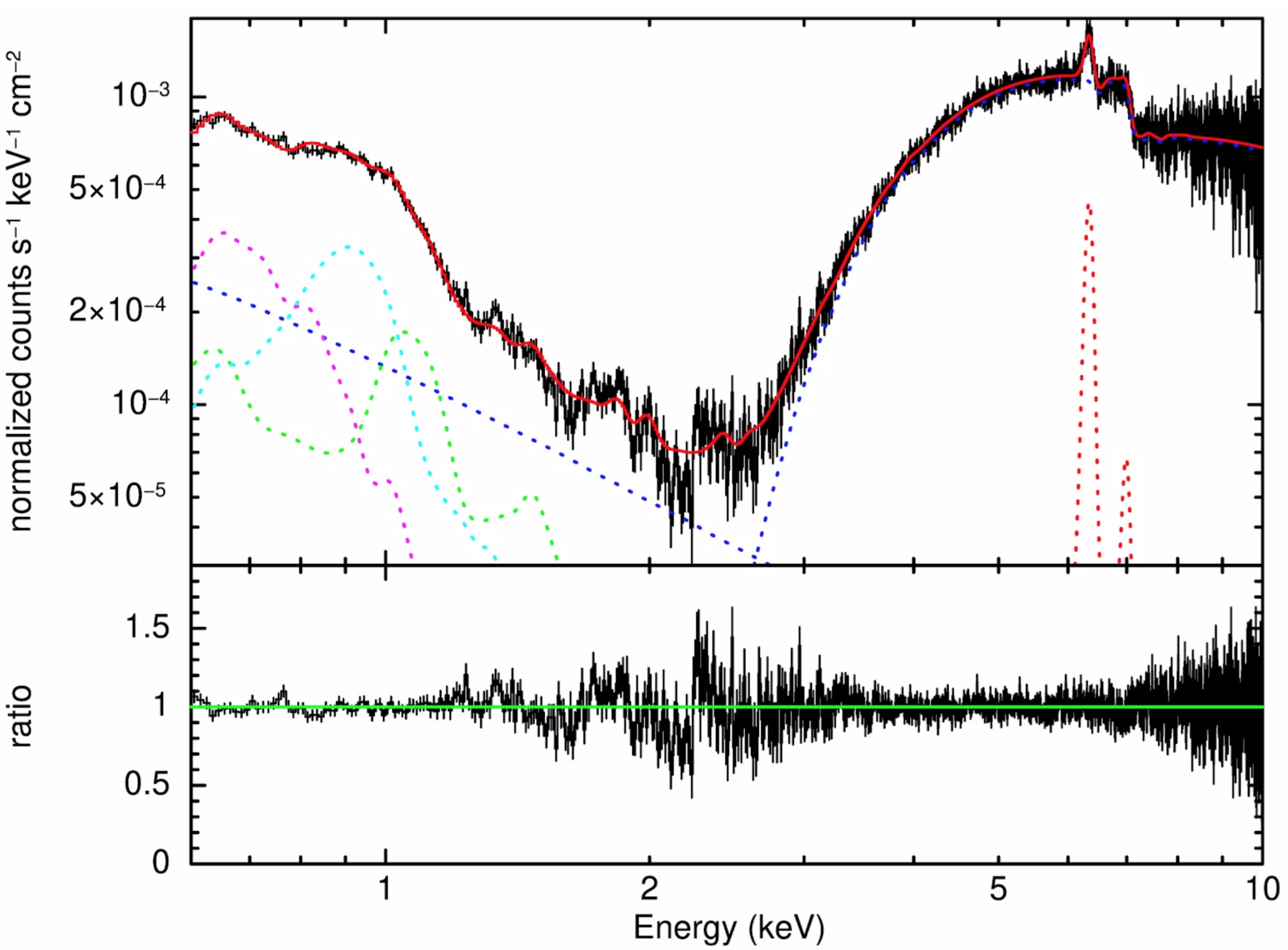NICER / ISS Science Nugget
for August 29, 2019
Peering into a clouded black hole
Some stars produce only a small percentage of the Sun's light; they are cool, and small, but they will live several times
longer than our Sun. Other stars are so enormous that they dwarf the Sun; they are hot, and produce hundreds of thousands
of times more light, but live for only a million years or so. These extremes, and the remarkable diversity of properties
in between, are set by the mass and heavy atom content ("metallicity") of the star. Like understanding the eigenvectors of
a mechanics problem, astronomers finally understood stars when the roles of mass and metallicity were realized.
Accretion onto massive black holes at the centers of many galaxies may produce as much ionizing radiation in the universe
as stellar luminosity. Unfortunately, astronomers do not yet have the eigenvectors of black hole accretion to help us
understand the wide diversity of active galactic nuclei (AGN). Some AGN are very luminous and we are afforded a clear
view of the central engine, where radiation is produced; others are heavily obscured by neutral and ionized gas. The
latter are particularly difficult to study; for instance, some models predict that the obscuring gas lies far from the
black hole, while others find that it lies relatively close.
NICER studied the obscured black hole in the nearby galaxy NGC 4388 (distance = 17 megaparsecs) during the early phase of
the mission. The sensitivity and spectral resolution of NICER made it possible to constrain the location of both cold,
neutral obscuring gas and ionized gas: they appear to be just 10,000 gravitational radii (GM/c2) from the black hole, or
about 1% of the distance predicted in canonical models. This is just one early indication of NICER's ability to improve
our understanding of massive black holes in AGN; a host of monitoring programs in the year ahead are set to make similar
advances.

Figure:
The NICER spectrum of the accreting massive black hole in the nucleus of galaxy NGC 4388. The top panel shows the data
(black) and best-fit model (red); the bottom panel shows the data/model ratio to indicate the quality of the fit. Below 1
keV, the spectrum is dominated by emission from diffuse plasma on large spatial scales; it may be only tangentially
related to the accretion process. The large valley between 1 and 3 keV is due to obscuring gas in the nucleus. Absorption
becomes progressively less effective above 3 keV. The narrow emission feature at 6.4 keV is an Fe K-alpha emission line;
it is re-emission of the energy absorbed by the cold gas. The width of this line encodes the orbital velocity of the cold
gas, and its proximity to the black hole.
The study of NGC 4388 is accepted for publication in an upcoming edition of The Astrophysical Journal (J. M. Miller et
al., 2019, in press). This is NICER's 34th accepted peer-reviewed paper.
Links:
<< Previous
Main Index
Next >>